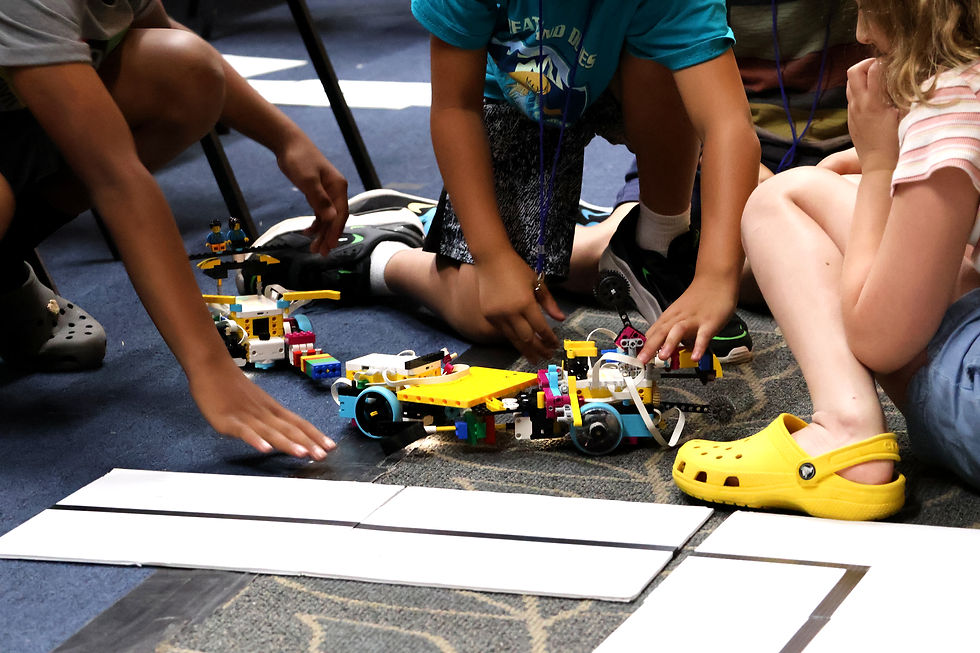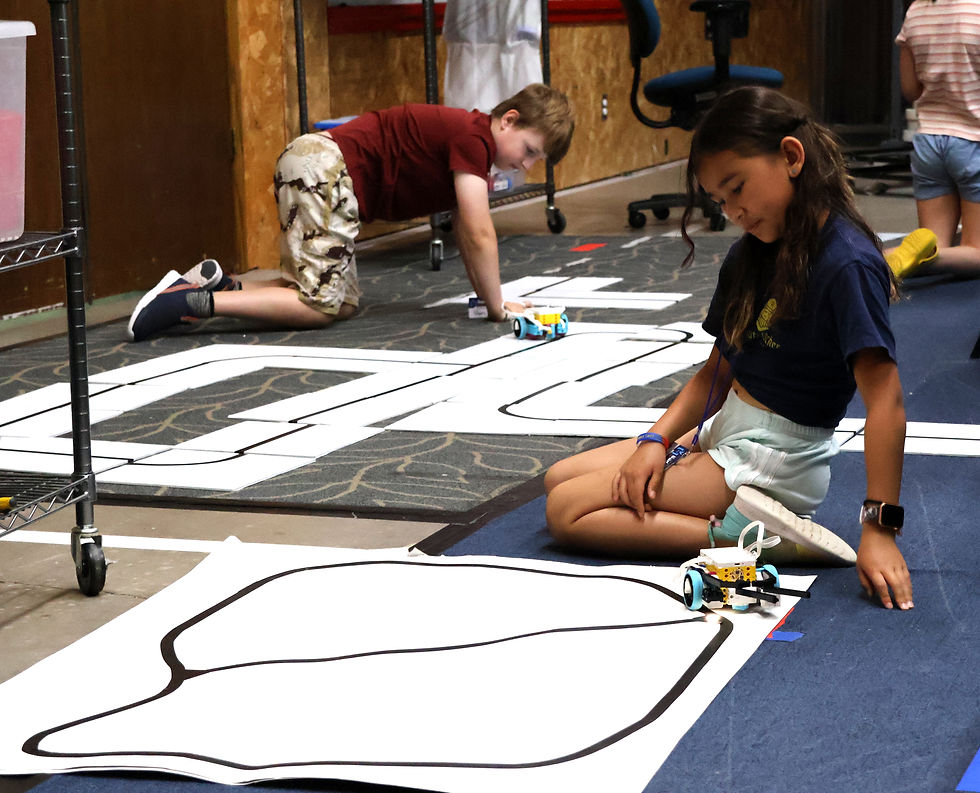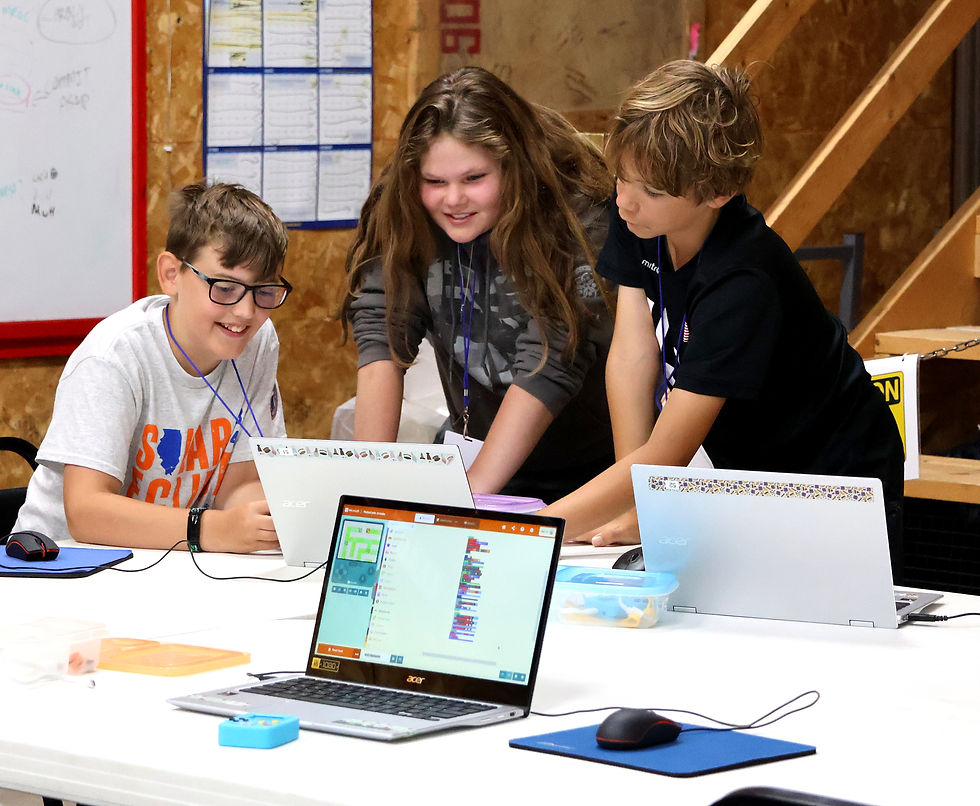Hands-On Learning the BadgerBots Way
- Rebecca DeCabooter

- Jul 16, 2024
- 3 min read

At BadgerBots Summer Camp, we believe that the best way to teach kids computer science is through hands-on learning. This approach is not just a teaching strategy; it's a philosophy that drives our curriculum. As BadgerBots Executive Director Mark Rushton says, “At our summer camp, we're all about hands-on learning; it's how we get kids excited about learning. By engaging kids in interactive and fun activities, we inspire them to develop a lasting love for STEM.”
The Importance of Hands-On Instruction
Hands-on learning is the process of learning by doing. When given the chance to interact with physical objects, solve problems, conduct experiments, and work collaboratively, students cultivate critical thinking skills, problem-solving abilities, and a deeper understanding of the subject matter.

A 2023 Gradient Learning Poll shows 87% of K-12 teachers noted an improvement in student engagement when integrating purposeful play. Hands-on learning is particularly effective in teaching computer science because programming involves trial and error, and hands-on learning provides immediate feedback. Students can see the results of their code in real-time, allowing them to quickly identify and correct mistakes. This iterative process enhances problem-solving skills and helps students learn how to troubleshoot and refine their code effectively.
Why Hands-On Instruction Works So Well
Hands-on learning works because it transforms abstract concepts into tangible experiences. When students build and program robots, design arcade games or create 3D printed objects, they’re not just writing code; they’re solving real-world problems. This approach fosters critical thinking, creativity, and collaboration. It also builds confidence as students see their ideas come to life. As BadgerBots instructor Andrew Peterman puts it, "Seeing kids light up with confidence after tackling a tough project they put their all into—it's just the best feeling."
Moreover, hands-on instruction accommodates different learning styles. Visual learners

can see their code in action, kinesthetic learners can engage with physical components, and auditory learners can discuss their projects with peers and instructors. This multi-faceted approach ensures that every student can connect with the material in a way that complements their learning style. BadgerBots Lead Educator Melinda McLaughlin says, "It's all about finding what clicks for each kid, whether they're seeing it, doing it, or talking it out with others."
How We Integrate Hands-On Learning in Our Summer Camp Classes
Every child who walks through our doors has their hands on either a laptop, a robot kit, and/or LEGO building blocks. We distribute the materials early in class, enabling immediate use. Our instructors don't just talk theory; they show how things work in action. They often start by leading students through fun coding exercises, like our "Teacher Bot" game. In this game, students team up to write code on paper to safely guide an instructor across the room—though sometimes they accidentally guide them straight into a wall, leading to plenty of laughter. BadgerBots instructor Patrick DeCabooter says, “We like to use games to teach the kids—they grab their attention and help them understand challenging concepts. The instructors have fun with it, too. We love coding, and playing games is one way to share that excitement together.”
At our summer camp, kids aren’t tied to their desks. Much of the time they're on the

move: testing, debugging, racing and even battling with their robots. They’re swapping laptops to play games they coded. They’re watching their 3D objects print or taking them to a quiet spot to carefully remove the extra plastic supports. This dynamic environment encourages exploration and collaboration, making learning more engaging, memorable and fun. We never forget to have fun.
BadgerBots' Mission to Empower Future STEM Professionals
BadgerBots provides an immersive, hands-on learning experience. We engage students

with interactive activities that cultivate creativity and problem-solving skills. From building LEGO® and micro:bit robots to coding interactive games on Scratch and Minecraft, our camps immerse students in the exciting world of STEM. This hands-on approach not only makes learning enjoyable but also prepares students for real-world challenges in STEM and life.
At BadgerBots, our mission is to shape future science and engineering professionals by connecting kids to STEM experiences that spark awareness, drive excitement and cultivate passion. Hands-on instruction is not just our teaching method—it’s the key to unlocking our students’ potential.











Comments